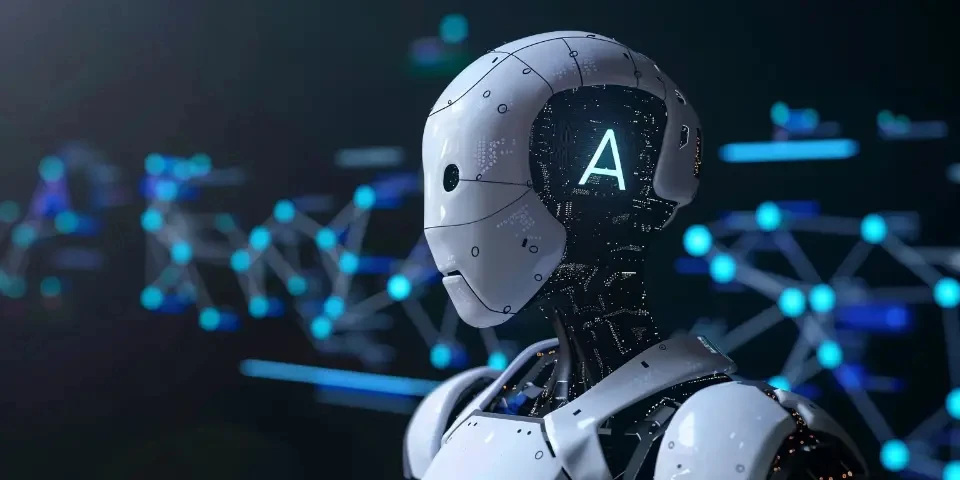Transforming User Experience AI-Powered Graphics for Interactive Websites
In the rapidly evolving digital landscape, user experience has become a crucial factor in the success of websites. Gone are the days when static images were enough to engage online visitors. To captivate and retain users, websites now require interactive and visually appealing graphics. With the advent of artificial intelligence (AI), web developers have found a powerful tool to transform user experience. In this article, we explore the impact of AI-powered graphics on interactive websites and discuss how they are revolutionizing the way we engage with online content.
The Power of AI in Graphics
AI has revolutionized various industries, including the field of graphics. By leveraging machine learning algorithms, AI can analyze vast amounts of data and generate visually stunning images in real-time. This capability has paved the way for AI-powered graphics that can enhance user experience on websites. Let's delve into the various aspects where AI is making a significant impact.

1. Personalized Visual Content
AI-powered graphics enable websites to deliver personalized visual content based on user preferences and behaviors. By analyzing user data, AI algorithms can generate graphics tailored to individual interests, demographics, and psychographics. This personalization enhances user engagement and drives conversion rates.
2. Real-time Image and Video Generation
With AI, websites can generate images and videos on-the-fly, eliminating the need for pre-loaded media files. This dynamic approach ensures that users always see the most up-to-date and relevant content. AI algorithms can also adapt graphics based on user interactions, creating an immersive and interactive experience.
3. Intelligent Image Recognition and Tagging
AI-powered graphics can automatically analyze and tag images, making them easily searchable and accessible. This feature benefits both website owners and users, as it improves content organization and enhances user navigation. Users can find desired images quickly, leading to an optimized browsing experience.
4. Enhanced Augmented Reality (AR) Experiences
AR has gained popularity in recent years, and AI plays a crucial role in delivering highly realistic and interactive AR experiences on websites. By combining AI algorithms with AR technology, websites can offer users an immersive experience, allowing them to visualize virtual objects in their real environment.
5. Smart Content Filtering and Recommendations
AI-powered graphics can analyze user behavior and preferences to provide intelligent content filtering and recommendations. By understanding user interests, AI algorithms can suggest relevant graphics and create a personalized browsing experience. This leads to increased user satisfaction and engagement.
6. Speed Optimization and Bandwidth Efficiency
AI algorithms can optimize graphics to reduce file sizes without compromising visual quality. This optimization enhances website loading speed and improves bandwidth efficiency. Users can enjoy a seamless browsing experience, even with slower internet connections or on mobile devices.
7. Voice-based Graphics Navigation
Voice assistants, powered by AI, have become increasingly popular. Websites can leverage AI-powered graphics to enable voice-based navigation, allowing users to interact with graphics through voice commands. This feature enhances accessibility for users with disabilities and provides a convenient hands-free browsing experience.
8. Sentiment Analysis in Graphics
AI algorithms can analyze user sentiments based on their interactions with graphics. By analyzing facial expressions or text inputs, websites can adapt graphics to evoke desired emotional responses. This capability enables websites to create emotionally engaging experiences, enhancing user satisfaction and brand loyalty.
Frequently Asked Questions
Q: What are some popular AI-powered graphics tools for website development?
A: There are several popular AI-powered graphics tools available for website development, such as Adobe Sensei, DeepArt.io, and Runway ML. These tools offer various features and functionalities to enhance visual content creation and user experience.
Q: How can AI-powered graphics benefit e-commerce websites?
A: AI-powered graphics can benefit e-commerce websites by providing personalized product recommendations, enhancing visual product representation, and improving virtual try-on experiences. These capabilities enhance user engagement, increase conversion rates, and contribute to a seamless online shopping experience.
Q: Are AI-powered graphics limited to high-end devices or internet connections?
A: No, AI-powered graphics can be optimized to work efficiently on various devices and internet connections. AI algorithms can adapt graphics based on device capabilities and internet speed, ensuring a smooth user experience for all users.
Conclusion
AI-powered graphics are transforming the user experience on interactive websites. From personalized visual content to enhanced augmented reality experiences, AI algorithms are revolutionizing the way we engage with online graphics. By leveraging the power of AI, websites can create immersive, interactive, and visually appealing experiences that captivate and retain users. As AI continues to advance, we can expect even more groundbreaking developments in the world of graphics and user experience.
References
1. Adobe Sensei. Retrieved from https://www.adobe.com/sensei.html
2. DeepArt.io. Retrieved from https://deepart.io/
3. Runway ML. Retrieved from https://runwayml.com/
